Street Workout - instructions and variations for beginners
Street Workout is a great way to get fit and stay healthy. It's an exercise that combines bodyweight exercises with strength training and cardio, making it a great option for beginners. Whether you're looking to build muscle, lose weight, or just get in shape, Street Workout can help you reach your goals. This blog post by Fitness Instructor & Wellness Blogger Oona Tolppanen provides an overview of Street Workout for beginners, including instructions and variations for different exercises. With this guide, you'll be able to start your own Street Workout routine in no time!
So, what is Street Workout?
Street workout is a creative form of exercise combining elements of gymnastics and parkour. The workout is suitable for almost anyone and can be done nearly anywhere. You can train using your own body weight or different structures.
The key elements in Street Workout are handstands, pushups, dips, pullups, hanging, and combinations of these.
The first-ever Finnish championships in Street Workout took place in 2015, so the workout can be just a hobby or you can take it to a competitive level. Imagination plays a part in Street Workout, as the enthusiasts come up with the most inventive and challenging sequences imaginable. Street Workout is therefore beautiful to watch and a great spectator sport too.
For an outsider like me, Street Workout comes across as a really welcoming and accessible sport: encouraging others is part of the etiquette, training is very cheap, if not free, and simply having the right attitude will take you far. The sport has steadily been gaining in popularity and public awareness.
There is still work to be done to create suitable, specially designated Street Workout venues available throughout Finland. We need to activate local authorities and companies to provide suitable locations for Street Workout on a wider scale.
How do I get started?
I have provided instructions and variations for beginners. Enjoy!
Pullups
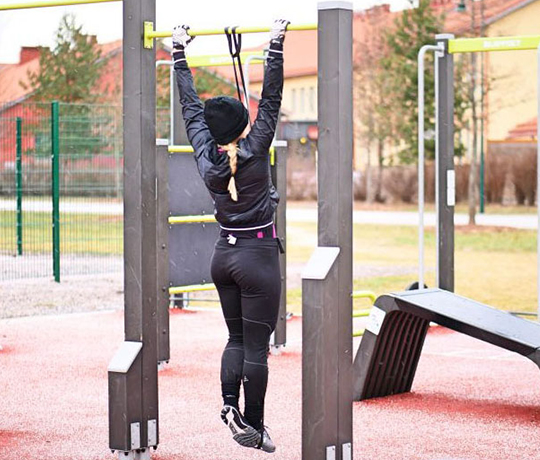
Assisted pull-ups with an elastic band–pronated grip
- Assisted pull-ups with an elastic band–pronated grip, note that the movement begins with the back muscles.
- Narrow pronated grip – the narrow pronated grip is usually easier but tends to engage the biceps, so be conscious of working your back muscles instead.
- Wide pronated grip – naturally targeting the back muscles, this variation is more challenging but very effective
- Legs raised – requires strong core control and the pull-up cannot be assisted at all with body movement.
More variations of pull ups
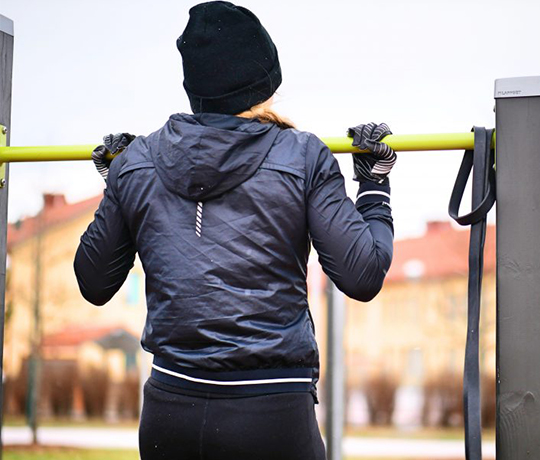
Narrow pronated grip

Wide pronated grip
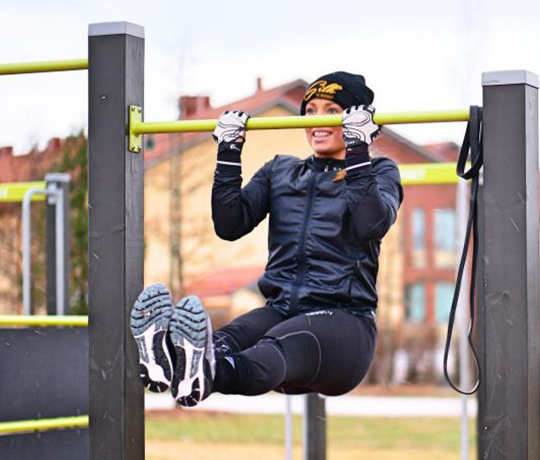
Legs raised
Dips
- With bent legs leaning against a bench – Keep your back straight, avoid engaging your legs, and use your triceps only to push yourself up.
- With straight legs leaning against a bench – With straight legs, this variation is more challenging. The same instructions apply: keep your back straight and make sure your triceps do the work.
- Dip with an elastic band on parallel bars – Wrap the elastic band around your hands and run it under your bent legs or knees to assist with the dip.
- Normal dip – With no elastic, focus on reaching a 90-degree angle and push yourself up engaging your triceps. The best way to do this exercise is to maintain a good tempo throughout the repetitions and support the muscle work by breathing correctly (i.e. push up on the exhale)
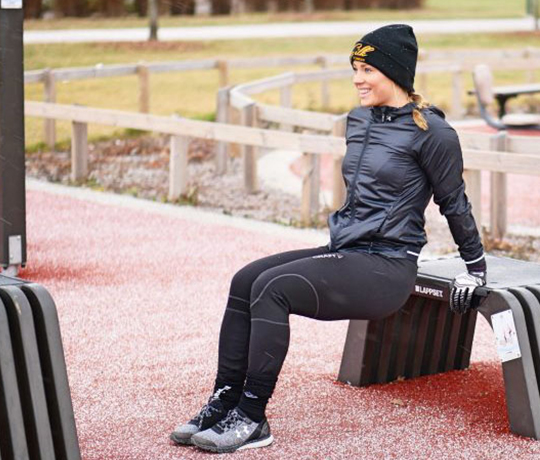
With bent legs leaning against a bench
More variations of dips
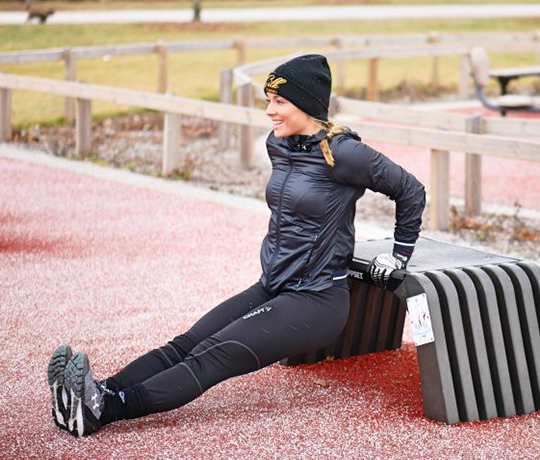
With straight legs leaning against a bench
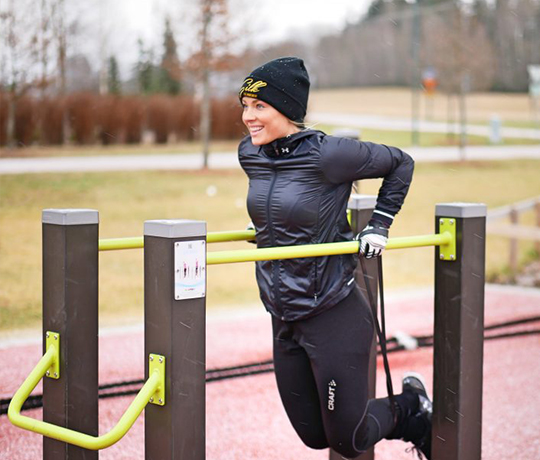
Dip with an elastic band on parallel bars
Ab workout hanging from the bar

Raising your knees
- Raising your knees – Keep your body in a stable position while raising your knees towards your chest.
- Raising straight legs – Keep your body in a stable position and raise your legs to hip level whilst keeping them straight. Engage your abdominal muscles and avoid using your hip flexors. If your hamstrings are tight, keeping your legs straight may be difficult.
- Raising straight legs touching the bar – Keep your body in a stable position and focus on a controlled movement in this variation. Engage your abs to raise your legs and don’t assist the movement by swinging your body. In addition, use negative resistance on release and keep your back straight and abs engaged throughout the exercise.
- Raising straight legs towards the bar and upwards – Keep your body in a stable position and focus on a controlled movement in this variation. Engage your abs to raise your legs as above and also engage your lower abs at the final stage when raising the legs straight upwards. Avoid swinging your body for extra momentum and maintain negative resistance on release. This is the most challenging of the variations.
More ab workouts hanging from the bar
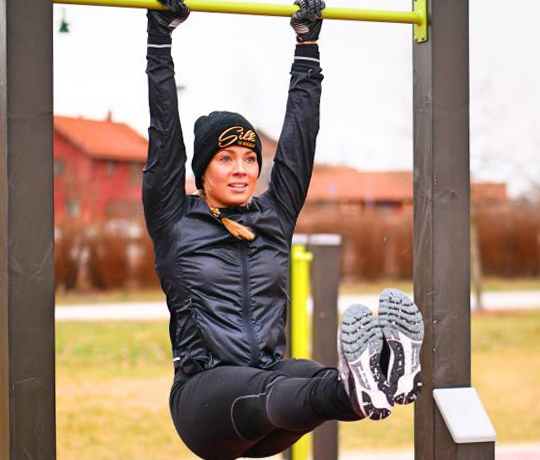
Raising straight legs
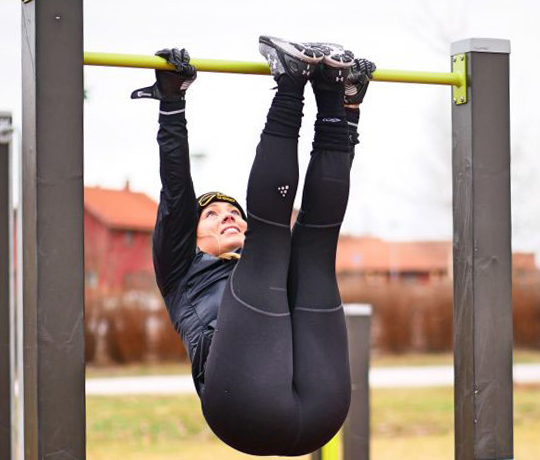
Raising straight legs touching the bar
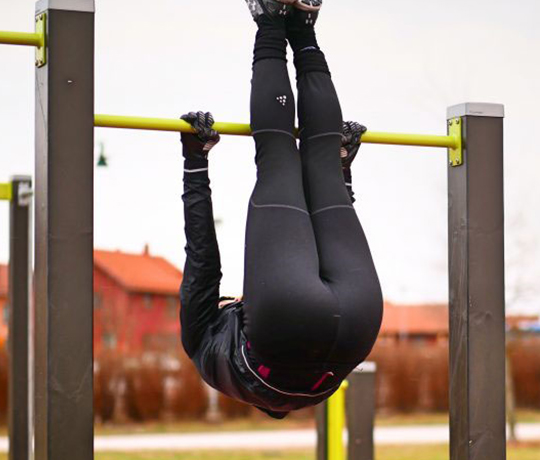
Raising straight legs towards the bar and upwards
